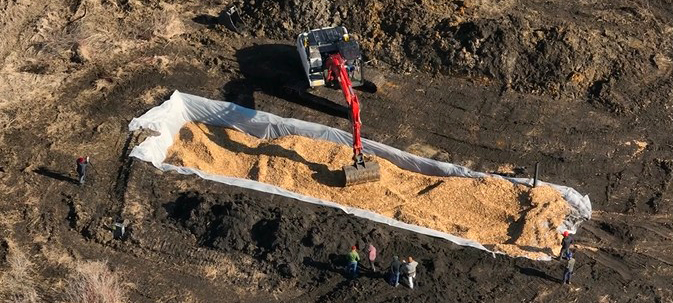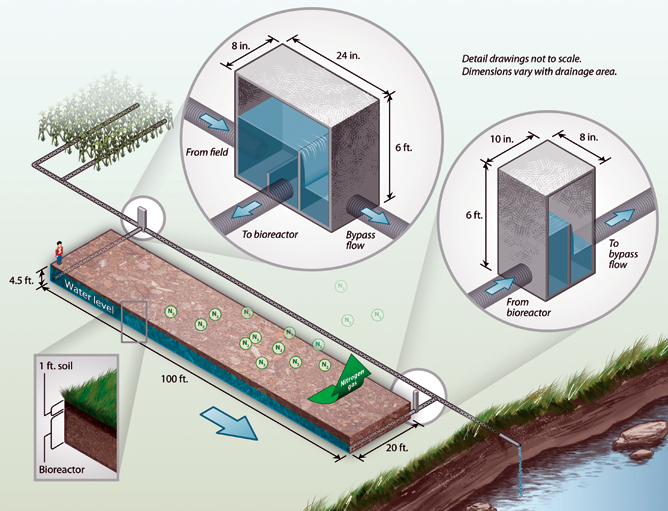Iowa farmers face ag drainage problems. There are solutions.
When farm field runoff flows through traditional tile drainage structures, water doesn’t have a chance to slow down and infiltrate the soil. This is not good for drought resiliency – which is becoming even more important as we face more dry summers. It also leads to nutrient loss downstream (AKA expensive and wasted inputs).
Now is a great time to try in-field or edge-of-field drainage practices. In some cases, they can be 100% paid for with cost-share offered through the $33 million Iowa Systems Approach to Conservation Drainage (ISACD) Regional Conservation Partnership Project and other partner contributions.
Below is a summary of drainage solutions.
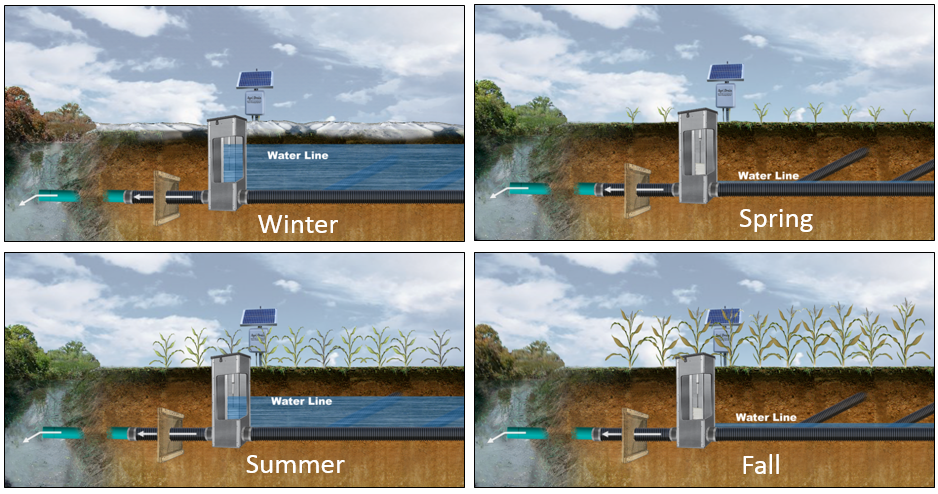
What is Drainage Water Management and what could it do for my farm?
Drainage Water Management (DWM) is an in-field strategy. It involves raising the water table as evenly as possible across a crop field, then installing a small water level control structure above-ground. The control unit allows the farmer to decide when to hold back or release drainage water. Drainage Water Management is eligible for cost-share under the ISACD. Benefits include:
- Better drought resilience.
- Reduced loss of nutrients from the field to the watershed.
- Lower input costs (less nutrient loss = less nutrient application needed).
- Control over how water runs off your field(s).
- Improved water quality, both locally and downstream.
What are “edge-of-field practices” and what could they do for my farm?
Edge-of-field practices go at the edge of the field, and don’t affect your crop management at all. They quietly clean water underground.
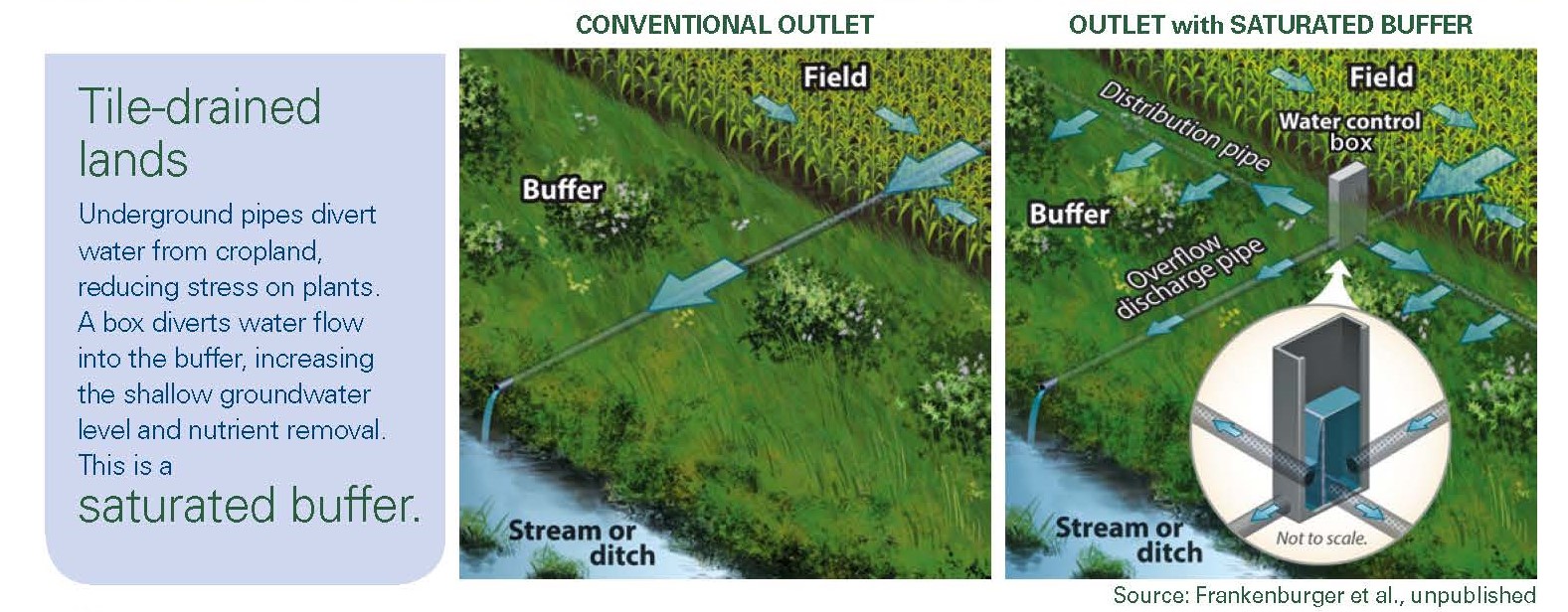
These are typically 100% paid for through cost-share. Engineers handle all the planning. That means you’re helping your community’s water with little effort and no financial burden – a win-win for everyone.
Bioreactors – Woodchip-filled underground trenches placed at the end of tile lines, catching drainage water on its way off your field. Bioreactors reduce soil nitrogen loss, need very little long-term maintenance, and won’t disrupt your field work.
Saturated buffers – Underground structures that redirect some tile water through a lateral distribution pipe, which drains into high-organic content soil. That means reduced soil nutrient loss and cleaner water. Saturated buffers include a small above-ground control unit.
What you can do if you have a constant wet, or flooded area
If you have a farm with a constant wet spot or area that floods frequently, you may want to consider a wetland. Wetlands do take acres out of production, but they’re typically areas where expensive seed, fertilizer, and crop protection inputs aren’t worth the low yields.
Constructed wetlands – Strategically placed areas for drainage water to flow off farmland. The water’s flow is slowed, allowing nutrients, sediment, and other contaminants to be naturally filtered. Wetlands also offer beautiful natural habitat.
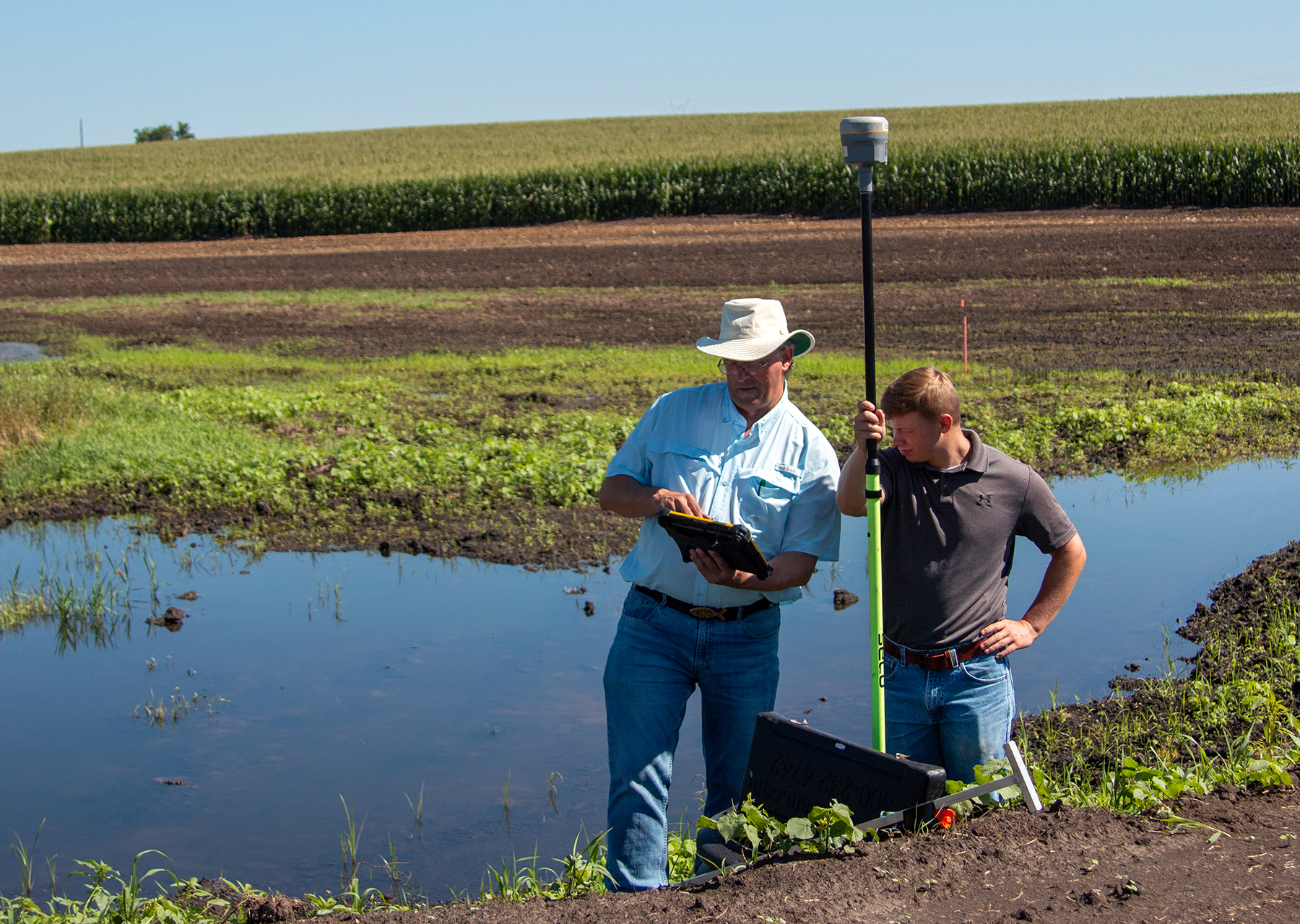
How to get cost-share for conservation drainage practices:
Getting cost-share through the ISACD can provide peace of mind as you decide which practices work best for your farm. Get started by contacting your NRCS county field office (found here by clicking on your county). Here are some other great resources:
- Fact sheet on the ISACD, including a full list of eligible practices and qualifying counties.
- Brief USDA-NRCS overview of conservation drainage practices.
- Ecosystems Services Exchange (ESE) and Agri Drain are great ISACD partners with expertise on conservation drainage practices, including the installation process.
This bioreactor’s woodchips can be seen mid-installation (credit – Polk County) Bioreactor infographic (credit – ISU Extension & Outreach)


